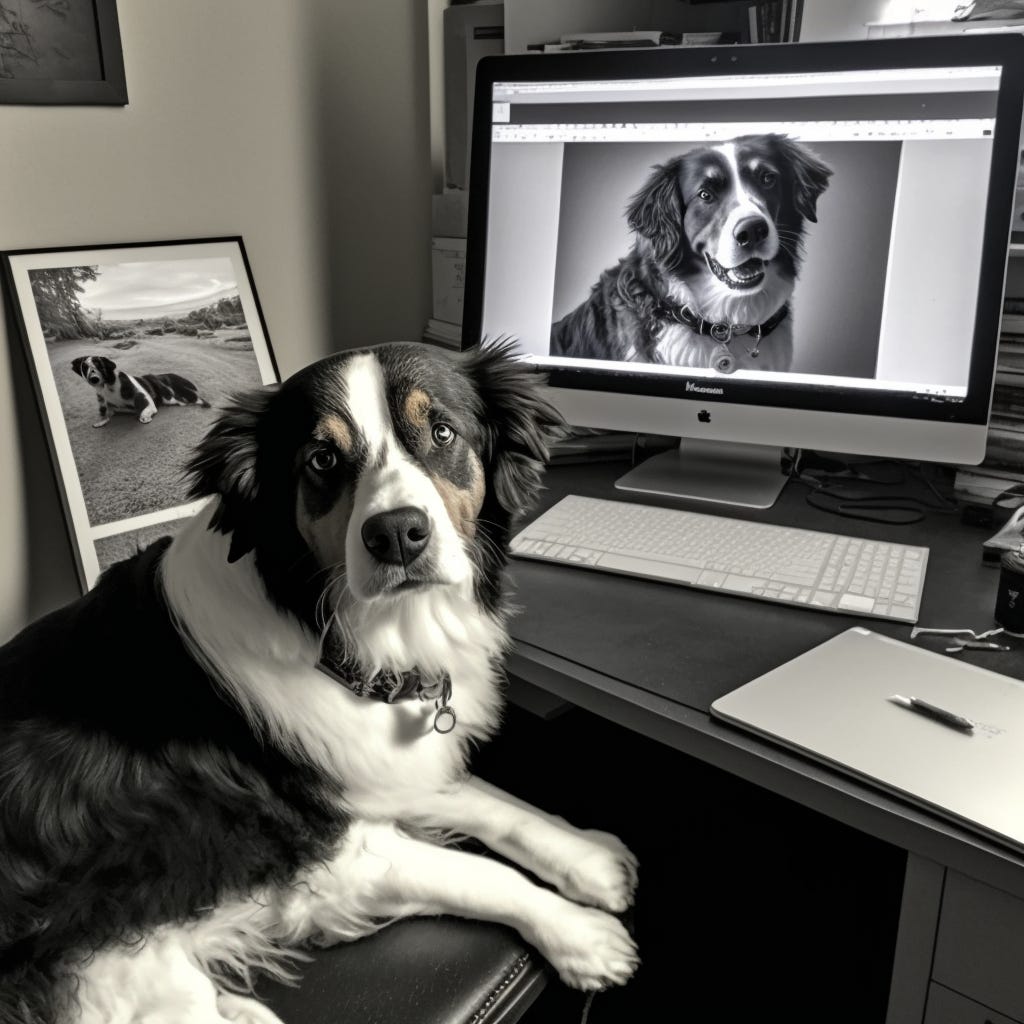Every time you stretch a font...somewhere a designer cries.
You may not be a designer but it doesn't mean you can't help make your product design better.
Hello! Mike here. Welcome to the Product Party newsletter 🎉. We deliver the latest and greatest in product fun to your inbox on Mondays and Thursdays. If you’re new to the party, click “Subscribe now” to get your special deliveries moving forward.
AI Overlord Meme of the Day
If you’ve also changed gigs recently, this one is spot on. Oops!
Shout out Product Management Memes Facebook group.
Are you a product person who gets to work with outstanding designers? Where everything they show you in Figma related to your request has turned your crappy user stories into the Mona Lisa? And you all are on the same page with everything thanks to getting to deploy design thinking?
You’re a lucky dog. Like this little AI doggie right here.
If you’re not fortunate enough to have a design/user experience presence on your team, there’s a good chance you’ll need to figure out how to translate what you want to happen to your dev team in a way that doesn’t make you all frustrated.
Here are a few ideas on some tools and techniques to consider to make this process a little better:
Make a “lo-fi” (aka only a little crappy) mock-up in a tool like Figma or Snagit and discuss it with your team.
Some of us have better image-making skills than others. Just because you’re not gifted in the design arts doesn’t mean you can’t at least put a rough (or REALLY rough) idea on the table and discuss it with your dev team.
Because I’m not in the gifted designer space, one of my favorite techniques is to use a combination of process flows to explain desired UX and screenshots of my product with either image copied/pasted into the tool or just on-the-fly in-tool shapes to explain desired UI. I’ll often use the comment boxes to leave a note to myself just in case I forget what vital point to drive home with the dev team.
After I’ve created everything, I will invite a few devs to join me in a call and talk through the design. They’ll ask questions and suggest how I might change it for clarity and, if the entire package is complete enough, be able to solve and size the work on the spot. Since we’re all about getting those backlog items ready for them to pick up, this will save you tons of time down the road.
Find other products with the aesthetic or experience you desire and share them.
Do you have apps or websites that you love to use? Do you wish your product could look and/or work similarly to that product? Tell your dev team, and you never know what might happen.
There are some slick features and functionalities across the product world, and the unfortunate thing about technology is that the tech stack your product is built on may not be able to do what you want. However, you won’t know until you identify what you like and discuss it with your team.
Additionally, if we are talking about creating a design aesthetic you want to model off of in a scalable way, start to research the great material around design systems and discuss this with your team. They may be able to suggest changes to be done now, which would enable you to use these incredible tools later.
Communicate back and forth frequently until you have a common understanding.
If you’ve read any of my past newsletters (like this one), you know that I continually preach the benefits of consistent and open communication. How does that impact design, you may wonder?
As you use your tools (including the ones above), you build closer relationships with your developers. Assuming that you’re also working towards fostering a friendly and collaborative environment, the more frequent discussions will establish a baseline of understanding between you and your dev team. Specifically, they will get better at anticipating what you want from an experience perspective.
The best part of this is that as you iterate and begin to trust each other, you can potentially reach a point where you won’t even have to do the designs upfront. You may even be able to (gasp) communicate the actual user story (or problem) to them and have a fantastic output given back.
Do you have a practice or way that you help to improve the design process with your team? Share it with us by clicking “Leave a comment.”
Listen of the Day
Description
When it comes to reaching our big goals, focusing too much on natural ability can be counterproductive because it’s something we can’t change. Instead, psychologist Angela Duckworth wants us to focus on cultivating grit. For our final episode of this special New Years miniseries, Maya selected this interview from the archives about grit, which Angela defines as a “power combination of passion and perseverance.” Plus, Angela offers four key strategies we can use to more easily resist temptations and stay the course. As always, we’d love to hear which insights resonate most with you.
Click the image to listen.
Read of the Day
Past newsletters you might find interesting
P.S. If you’re finding Product Party valuable, click the following button and share it with a friend!







You are so right about frequent collaboration with the developers!